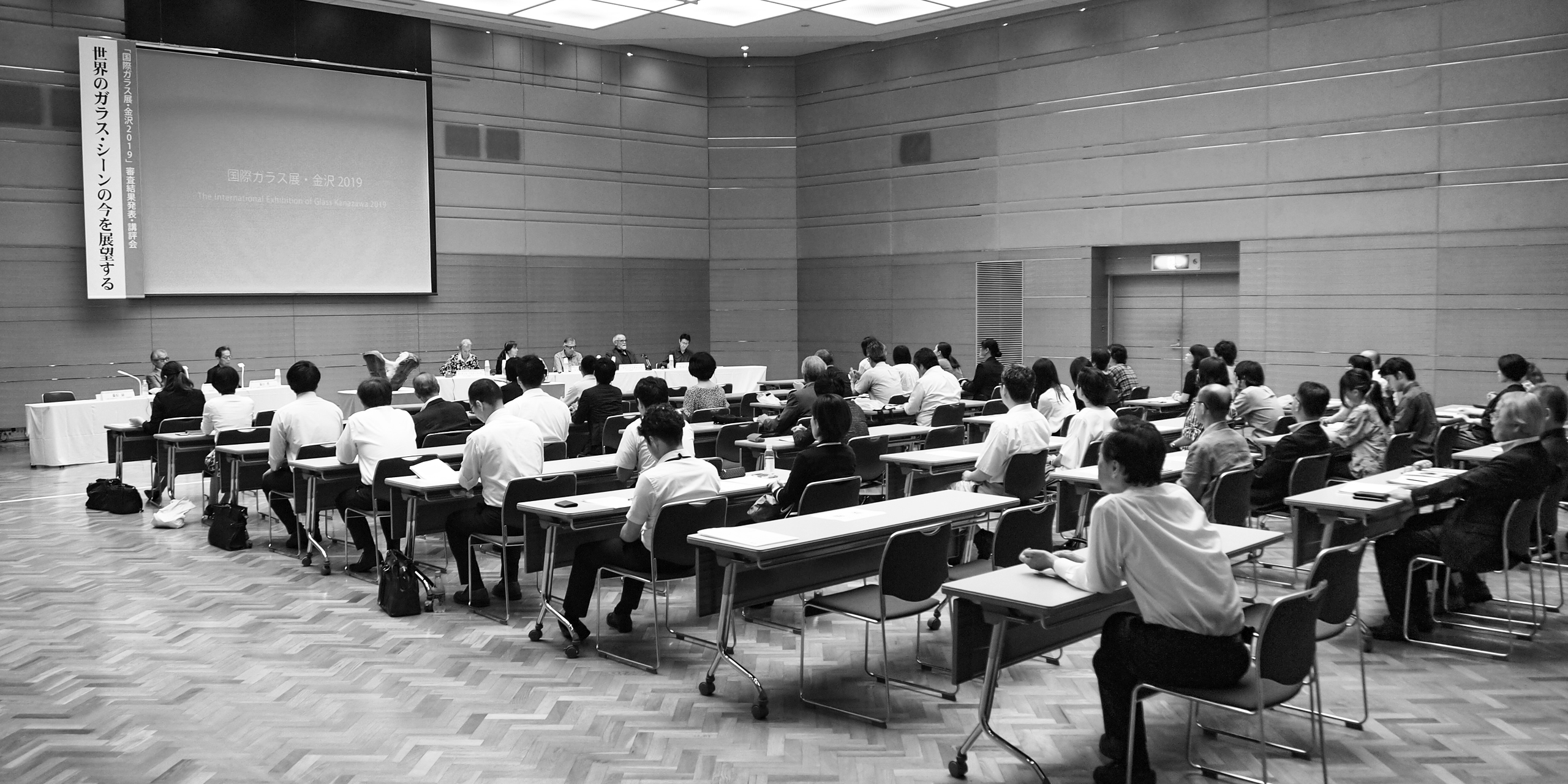Panel Discussion

Questions & Answers
TSUMORI ───── What are the artists asked to do regarding the relationship between expression, techniques and contemporary society? I would like to ask this to all of the jurors.
LAURSEN ───── Thank you for the question.
I find it important because I have actually thought that about this year’s wonderful works. But in a way, I missed some strong political expressions. I do not know why it is like that, but of course any artwork can and should be interpreted in different ways. We have only discussed the glass works we have seen today, but it is clear that the artists have a strong will to express what is going on now in the world.
TAKEDA ───── Thank you. Your question is asking about the artists’ attitude toward the relations between the works and the society as well as the works and the present era. Ms Laursen hopes that she could have come across more works created with more political or social perspectives.
Mr. Zoritchak, do you have any comments on the question?
ZORITCHAK ───── No matter what approach you take and no matter what concept you explore, your intention will be accepted and recognized in any era if you strongly believe in it. What is most important are your ideas and concepts. The artists’ concept is more important than color, transparency, or technique. It is, of course, easy if you have techniques, facilities, or if you can create works in a spacious atelier with assistants. However, your ideas are more important than anything else. Many artists tend to copy works which have come before. That is no good. Originality is of the utmost value. Every artist starts with some small ideas. You must believe in your ideas and go ahead at your own pace, then you can create an excellent work.
TAKEDA ───── Thank you for your excellent comment.
Jay Musler was given the prize for his work “City Scape” at the World Glass Now Exhibition in 1982. The top of the pure red sphere painted in gray is serrated. I have the feeling that his work expresses social messages on that era as well as on New York. I felt the same about his subsequent works. I would like to ask Mr. Musler what he thinks about the relationship between social messages and his own expression while creating his own artworks.
MUSLER ───── “City Scape” expresses the sea scape. I made this ball in the early 1980s. The color was bright red at the top. Basically the red part represents anger, and the black part represents alienation. It was a political statement, but that was also a kind of trap to fall into. I included political elements once in a while as I was studying and experimenting. I am quite a peaceful person however, and now as I am getting older, I seldom express political or social messages.
TAKEDA ───── Thank you. I hope these answers are satisfactory.
Zoritchak’s comment reminded me of some issues. There were a few works which arrived broken at the Final Assessment held yesterday. Actually, all the jurors discussed what to do with those broken works. At that time Zoritchak said clearly “There is no problem in assessing a work when it is broken.” In other words, it is totally all right that the broken works are also assessed. I think it shows that even technical mistakes are not necessarily a problem. This particular point was included in today’s symposium.
Techniques are important and there are many other important things. However, what is most important is what and how you should express, as well as the kind of expression that is the most appropriate for this day and age. This should be examined by the artists themselves. This is not a third person’s perspective, nor something objective. All the jurors discussed this important point today.
Mr. Musler is a peaceful person now, but when he was younger, he was quite radical and created works expressing his extreme emotion. “City Scape” is a simple ball in shape but he expressed his thoughts on that time when he created the work.
It is getting late. So I would like to bring this symposium to close.
FUJIHARA (MC) ───── Thank you so much for discussing the prize winners and for giving us stimulating suggestions for this exhibition.
As your material tells you, the International Exhibition of Glass Kanazawa 2019 will be held from October 30th 2019 to November 11th 2019 at the Shiinoki Cultural Complex, Ishikawa Prefecture. The visiting exhibition will be held from December 7th 2019 to February 16th 2020 at the Notojima Glass Art Museum. We hope you will visit the exhibition and enjoy the excellent works.
We would like to bring the Special Symposium for the International Exhibition of Glass Kanazawa 2019 to close. Lastly, please give all the panelists a round of applause.
Thank you very much.

